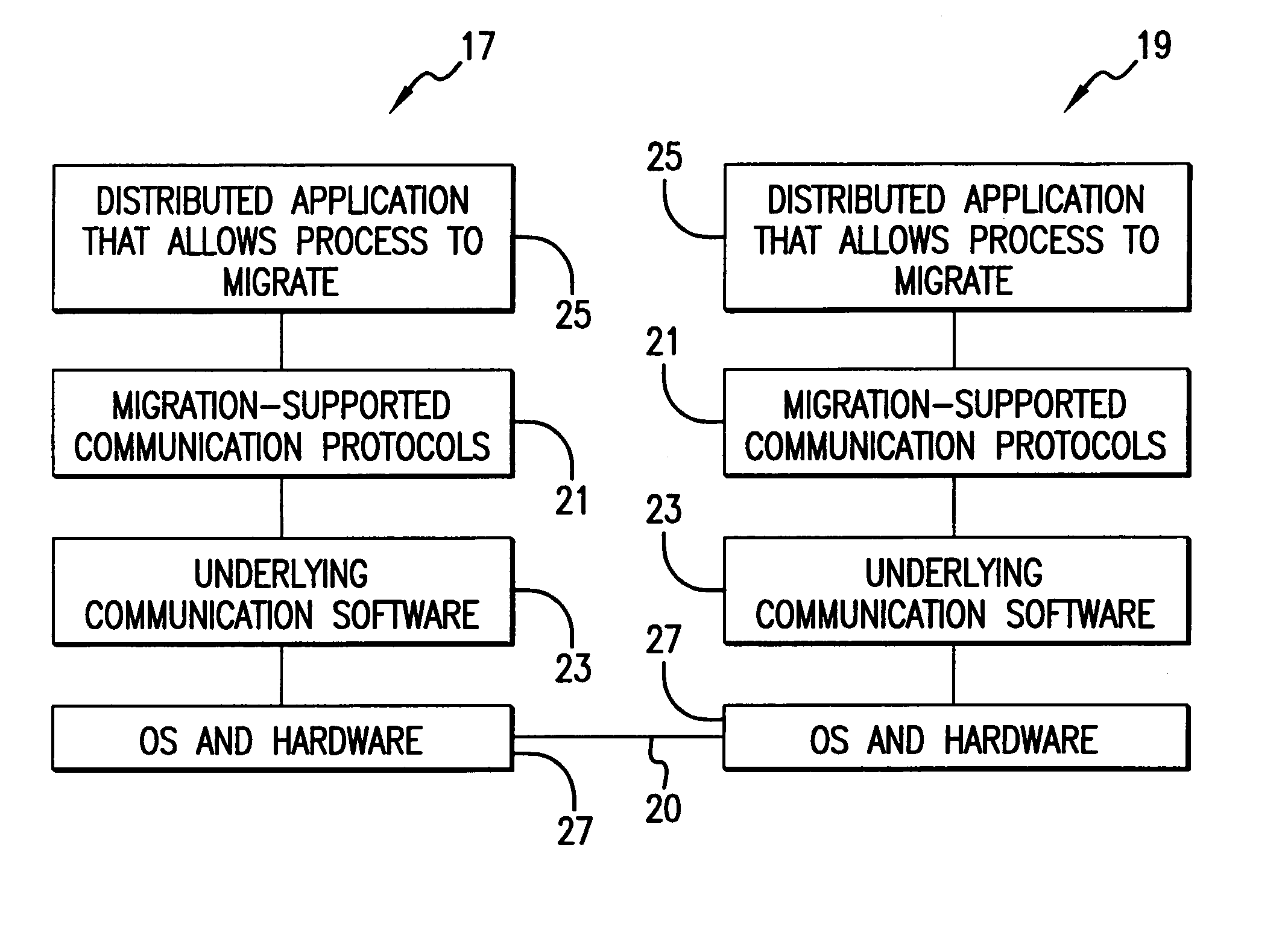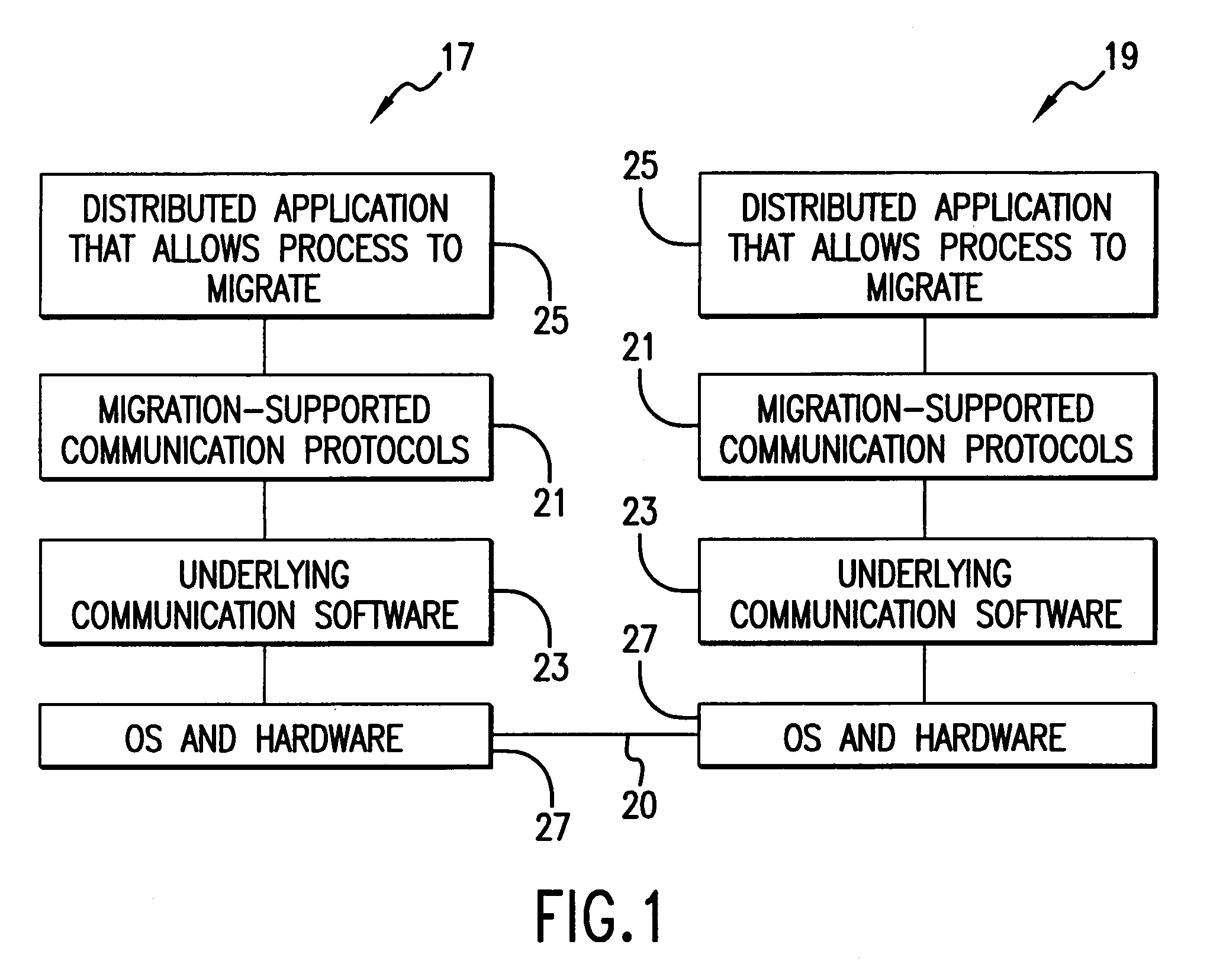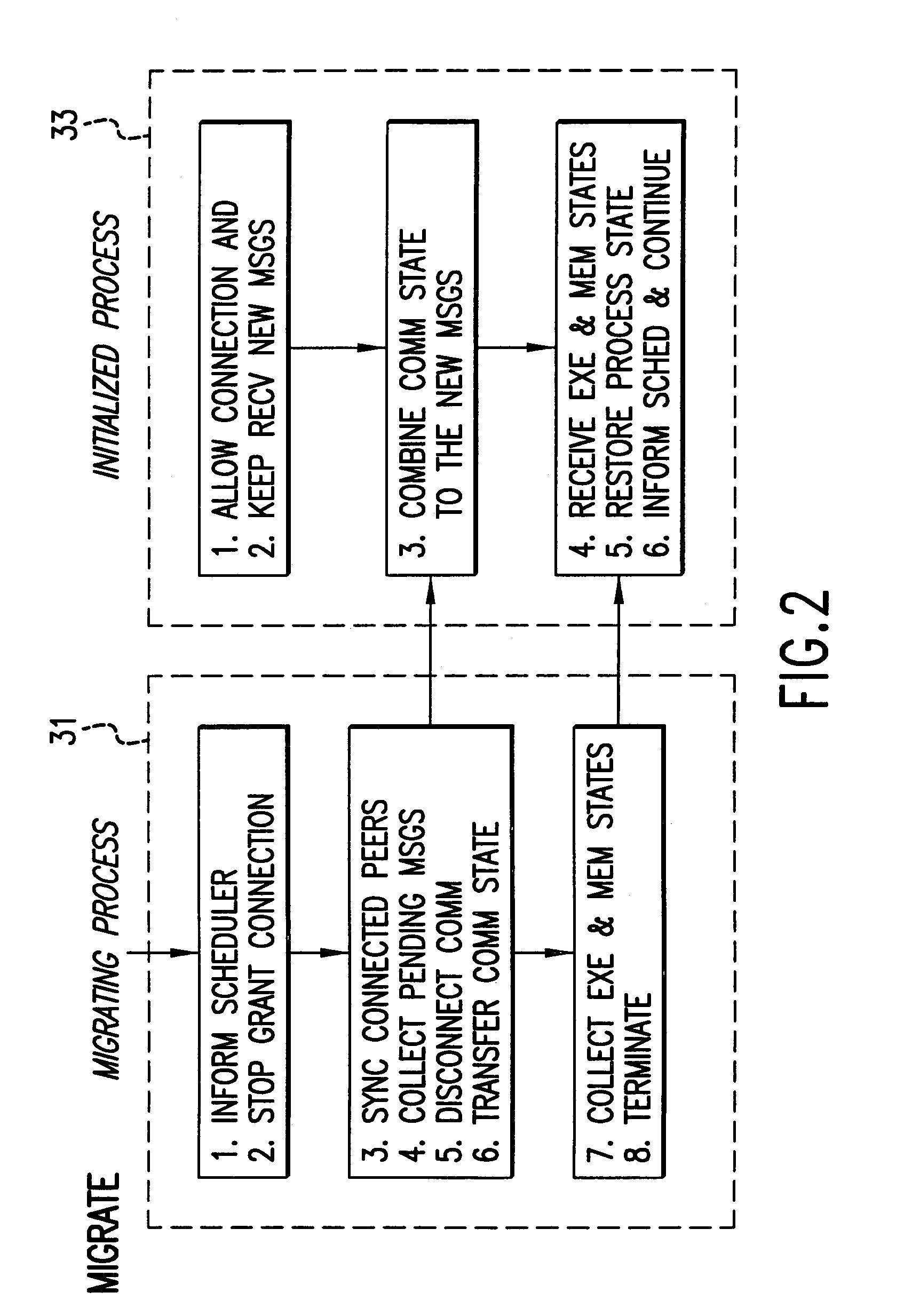Communication and process migration protocols for distributed heterogeneous computing
a technology of heterogeneous computing and process migration, applied in the direction of program control, multi-programming arrangements, instruments, etc., can solve the problems of not supporting process migration, not allowing migration, and not widely adopted process migration, so as to achieve effective support and small communication overhead
- Summary
- Abstract
- Description
- Claims
- Application Information
AI Technical Summary
Benefits of technology
Problems solved by technology
Method used
Image
Examples
example
[0082]To test the proposed data communication and process migration protocols, software prototypes were implemented and experiments performed on a communication intensive, parallel kernel, MG benchmark program. The prototypes consist of a software library for the protocol implementation and its supportive runtime system. As shown in FIG. 7, the protocol stack has four layers. For the virtual machine layer, a modified PVM communication library accommodates the protocol. PVM has two communication modes. One is direct communication implemented on top of TCP / IP, the other is indirect communication where messages are routed via PVM daemons. The PVM direct communication is extended for the present message passing protocol. The indirect mode is used only for sending control messages. The direct communication establishes TCP connection “on demand” when a pair of “pvm_send” and “pvm_recv” or a pair of “pvm_send” messages are invoked by the process on both ends.
[0083]As shown in FIG. 8, TCP l...
PUM
 Login to View More
Login to View More Abstract
Description
Claims
Application Information
 Login to View More
Login to View More - R&D
- Intellectual Property
- Life Sciences
- Materials
- Tech Scout
- Unparalleled Data Quality
- Higher Quality Content
- 60% Fewer Hallucinations
Browse by: Latest US Patents, China's latest patents, Technical Efficacy Thesaurus, Application Domain, Technology Topic, Popular Technical Reports.
© 2025 PatSnap. All rights reserved.Legal|Privacy policy|Modern Slavery Act Transparency Statement|Sitemap|About US| Contact US: help@patsnap.com



